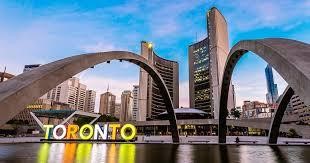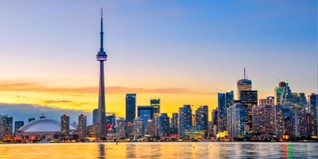
SDEWES INDEX
related metrics presents an opportunity to trigger policy learning, action, and cooperation to bring cities closer to sustainable development.
On these pages you will be able to get all the useful information you need to reach Toronto, Canada, how to get around, whether you need a visa for entering as well as suggestions for accommodation.
Check the tourist information on the following website: https://www.toronto.ca/explore-enjoy/visitor-services/
Visitors Map with Places of Interest: https://www.toronto.ca/wp-content/uploads/2022/06/9003-22-00890-Visitors-Map-Online-May2-Final.pdf


“It’s easy for me to care about Toronto, because Toronto is a community that cares about itself. It represents the world. It talks to itself, and because it does, it figures out that there must be a music garden as part of its existence.” (YoYo Ma)
TORONTO, ONTARIO, CANADA
Toronto is the capital city of the Canadian province of Ontario. The word Toronto originates from Taronto referred to "The Narrows", a channel of water through which Lake Simcoe discharges into Lake Couchiching. This narrows was called tkaronto by the Mohawk, meaning "where there are trees standing in the water." Today, the area is partially surrounded by trees along the water's edge with the rest with marinas and location of the historic Mnjikaning Fish Weirs. Indigenous peoples have travelled through and inhabited the Toronto area, located on a broad sloping plateau interspersed with rivers, deep ravines, and urban forest, for more than 10,000 years.
Toronto is the most populous city in Canada and the fourth most populous city in North America. The city is the anchor of the Golden Horseshoe, a population surrounding the western end of Lake Ontario, and the Greater Toronto Area which continues north from Lake Ontario. Toronto is an international centre of business, finance, arts, sports and culture, and is recognized as one of the most multicultural and cosmopolitan cities in the world. The diverse population of Toronto reflects its current and historical role as an important destination for immigrants to Canada. More than half of residents were born outside of Canada, more than half of residents belong to a visible minority group, and over 200 distinct ethnic origins are represented among its inhabitants. While the majority of Torontonians speak English as their primary language, over 160 languages are spoken in the city.
Toronto is a prominent centre for music, theatre, motion picture production, and television production, and is home to the headquarters of Canada's major national broadcast networks and media outlets. Its varied cultural institutions, which include numerous museums and galleries, festivals and public events, entertainment districts, national historic sites, and sports activities, attract over 43 million tourists each year. Toronto is known for its many skyscrapers and high-rise buildings, in particular the tallest free-standing structure on land outside of Asia, the CN Tower.
The city is home to the Toronto Stock Exchange, the headquarters of Canada's five largest banks, and the headquarters of many large Canadian and multinational corporations. Its economy is highly diversified with strengths in technology, design, financial services, life sciences, education, arts, fashion, aerospace, environmental innovation, food services, and tourism. Toronto is the third-largest tech hub in North America after Silicon Valley and New York City, and the fastest growing.
Toronto has a diverse array of public spaces, from city squares to public parks overlooking ravines. There are many large downtown parks, which include Allan Gardens, Christie Pits, Grange Park, Little Norway Park, Moss Park, Queen's Park, Riverdale Park and Trinity Bellwoods Park. An almost hidden park is the compact Cloud Gardens, which has both open areas and a glassed-in greenhouse, near Queen and Yonge. South of downtown are two large parks on the waterfront: Tommy Thompson Park on the Leslie Street Spit, which has a nature preserve, is open on weekends; and the Toronto Islands, accessible from downtown by ferry. Large parks in the outer areas managed by the city include High Park, Centennial Park, and Downsview Park.
“The fact that over 50 per cent of the residents of Toronto are not from Canada, that is always a good thing, creatively, and for food especially. That is easily a city’s biggest strength, and it is Toronto’s unique strength.” (Anthony Bourdain)
MONEY AND CURRENCY
The Canadian currency is the Canadian Dollar. It has the following banknotes: 5 ; 10 ; 20 ; 50 and 100 dollars. The coins in circulation are: 0.05 (nickel) ; 0.10 (dime) ; 0.25 (quarter) ; 1.00 (dollar/loonie) and 2.00 (two dollar/toonie). Generally, outside of major hotels, you cannot pay with a foreign currency other then the American Dollar, however a flat exchange is traditionally expected in that case.
LANGUAGE
The official languages of Canada are English and French. English will be the working language of the conference.
VOLTAGE IN CANADA
The voltage in Canada is generally 120 V, and the frequency is 60 Hz. The plugs and sockets are of type B. In general, an adapter is all you need for appliances. A converter is necessary if you intend to use appliances with a motor, such as a hair dryer or electric razor. Note that a converter can also be used as an adapter.
DRIVING SAFELY
Traffic moves on the RIGHT hand-side of the road.
Please contact us at na.sdewes2024@sdewes.org for any questions.










